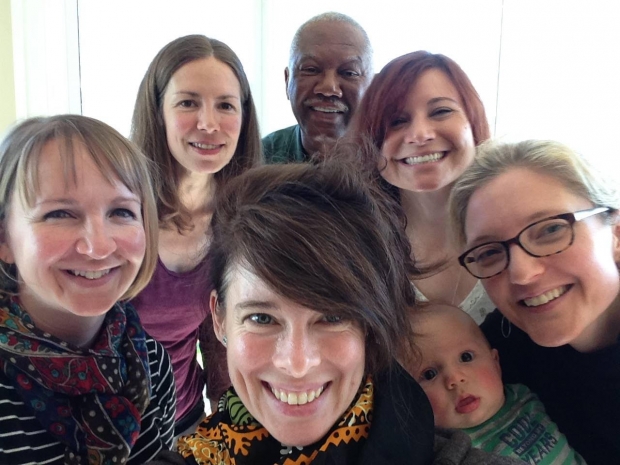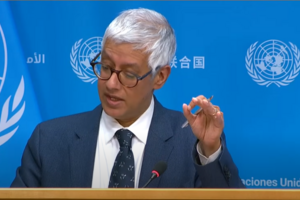Living Room Conversations for Inclusive Campus Environments

Minnesota has some of the worst gaps in educational attainment in the country. That’s not really news anymore. What may be news to people living outside the state, however, is the degree of ethnic and class segregation in our apparently progressive “best places to live” Twin Cities. Our extreme segregation is what inspired a handful of Minneapolitans from varying ethnic backgrounds to try hosting an intimate, honest conversation about race. The Living Room Conversations model provided a perfect format for this conversation.
That’s how, in January 2015, seven of us Minneapolitans ventured out in subzero temperatures to do a Living Room Conversation on Race. We got food out, introduced ourselves and nervously settled in. Sitting in my friend’s living room, the seven of us talked about everything from Angela Davis to learning Spanish to having mixed-race parents to bringing our own kids to cultural celebrations in different neighborhoods so they would get to know a reality that would otherwise be unfamiliar. With Tiffany Wilson-Worsley, I was one of the co-organizers.. Before we began the conversation, I asked the six others in the room if we could take a picture of this first Living Room Conversation on race because it felt like a momentous event. But no one was comfortable with the idea of a group photo. I would not have guessed that two hours later, rising up from our chairs feeling somewhat inspired, and even giddy that maybe we had made some new friends, everyone would be eagerly gathered around for a photo. The difference between our pre-conversation and post-conversation selves was that striking.
We have run Living Room Conversations on Race and Ethnicity with folks from different churches, at a diverse, local college and with our various friends. The conversations have used the Race and Ethnicity and Status and Privilege Conversation Guides, topics that many people would shy away from if they had to talk about them with people they didn’t know or trust. But using the Guides has meant that more than 90% of participants have had a positive experience and come away wanting to engage in more of them.
As a recent commentator on Living Room Conversations said, “Americans can be very curious.” It may be curiosity that means participants who report they are nervous before starting the conversations report by the end they want to participate in another one. At Minneapolis Community and Technical College, I have used the Conversation Guide on Status and Privilege. Participants can talk about any form of privilege that affects them--race, gender, income, and educational privilege come up in these conversations. To date, the College has involved more than 150 employees in these Living Room Conversations and trained 18 facilitators to guide them with small groups of four to seven faculty and staff. Campus feedback has also been exceedingly positive. One faculty member said it was the best professional development experience he had had in more than a decade. One instructor brought the practice to her classroom and students had such a positive experience that she brought it to other classes. Together with the College’s Chief Diversity Officer, we found the idea of bringing Living Room Conversations on Status and Privilege to students intriguing, so during the Spring 2017 semester, we decided to try it out.
In the course Jay teaches, “American Minority Relations,” students come from different programs including human services (where most are students of color) and law enforcement (where most students are White). Some students reported being anxious before the conversation began. But as people began to talk in their small groups, quiet, concentrated listening gave way to head nods, settling in, and even boisterous laughter. Almost all students reported they would do a similar conversation again or would even want to get involved in many more in the future. Again we found that of those who reported being nervous about having the conversation, half said they’d like to do more of them. This reminded us of another Living Room Conversation we did with approximately thirty college administrators from across Minnesota: we noticed people who are normally talkative and because of their role are used to having center stage became transfixed, mesmerized by a colleague’s personal story they surely would never otherwise have shared. Multiple facilitators in other areas of the country have described the conversations as “magical.”
But why magical? The Conversation Agreements, the Living Room Conversations format of multiple rounds of sharing and listening, and ending on a discussion of what individuals learned and what actions they can take, all make these conversations feel like genuine learning has occurred. Participants go deeper into dialogue with each round of conversation. The fact that people can choose which questions to answer gives each participant a degree of control over what they share. This kind of structured, quiet, intimate conversation exists in a realm entirely separate from staunch political stances or Facebook rants and us-them thinking. When it’s so easy to be presented with negative information about what “the other side” is capable of, a Living Room Conversation asks participants to understand where individuals are coming from. The conversations are about personal experiences and everyday life, not about beliefs or “shoulds.” These conversation foster looking others in the eye, a dying art in the age of the smartphone. This practice is about seeing others and ourselves as real people, as three-dimensional.
Many campuses aspire to create an environment of inclusivity. Living Room Conversations on Race and Ethnicity and Living Room Conversations on Status and Privilege, along with more than 60 other CGuides, can be used for small-group conversations that are positive, real, holistic and truly inclusive. Materials are open-source and free. Diversity officers and others trying to meet the needs of students and foster inclusive campuses should consider using Living Room Conversations as a practice that catalyzes interpersonal awareness, insight and, we believe, personal change.

May 21st, 2024


May 16th, 2024

May 16th, 2024